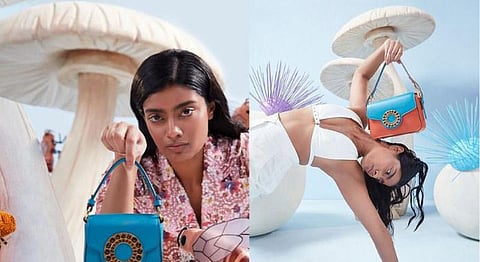
- HOMEGROWN WORLD
- #HGCREATORS
- #HGEXPLORE
- #HGVOICES
- #HGSHOP
- CAREERS
- ABOUT US
- CONTACT US

India’s shaping up to be one of the biggest markets for luxury goods. With high-end luxury retailers tapping in to get a piece of the action, international fashion brands have set up brick and mortar stores all over the country.
While the buzzing names like Gucci and Bulgari try to capture the Indian buyers’ interest, it’s impressive to pay attention to the upswing in Indian luxury labels and designers focused on mastering the confluence of luxury with Indian heritage. Enter Aranyani, a Bengaluru based label combining state-of-the-art aesthetic design and handicraft techniques to create wearable art pieces.
Inspired by the concept of ateliers that slowly gained traction in the west, Arnayani’s state of the art atelier enmeshes traditional craft techniques and modern sensibilities into sophisticated designs. Uplifting the values of Vedic philosophies of S.A.I. — service, awareness and inclusivity, the label’s vision focuses on setting an egalitarian tone for luxury fashion.
From building a sustainable approach to the world of designer handbags to providing an enriching work environment for artisans, the label champions a collective creative spirit that strengthens the buyer and creator network.
Boasting a world-class team of designers who’ve been trained by top leather craftsmen working for Europe’s high-end brands, the Aranyani team is seasoned in rare couture techniques of gold gilding, hand embroidery, hand painting and setting precious gemstones, which reflect in the stunning range of bags churned out by the label. Dreamy motifs, earthy designs, and inspiration retrieved from lush landscapes to the timeless architecture of the country are what make an Aranyani bag stand out.
The brand commits to adhering to a slow design ethos that includes employing sustainable materials like leftovers from animals’ food, having a plastic-free policy, and using high quality leather-like full-grain Napa leather that is responsibly sourced.
The brand has exciting plans in the pipeline that include switching to chrome-free leather by 2023 and aiming for a zero-waste design policy in the coming decade.
View the label here.
If you enjoyed reading this article, we suggest you also read:
